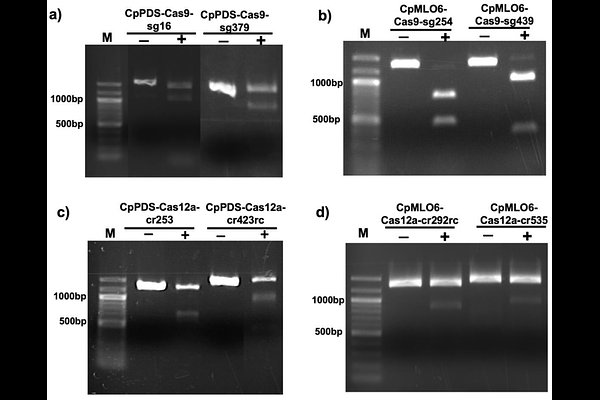Genome editing of papaya using both Cas9 and Cas12a

Genome editing of papaya using both Cas9 and Cas12a
Hasley, J.; Dinulong, R.-J.; Adhikari, A.; Christopher, D.; Tian, M.
AbstractPapaya (Carica papaya L.) is an economically important tropical crop that produces papain and highly nutritious fruit, which are used in the grocery, cosmetic, pharmaceutical, and food processing industries. However, various destructive pathogens severely threaten its production. Furthermore, limited natural genetic variation restricts breeding efforts for crop improvement. Therefore, we turned to gene editing as a tool to address these problems. We utilized two CRISPR systems (Cas9 and Cas12a) and two papaya genes, CpPDS (phytoene desaturase) and CpMLO6 (Mildew Locus O 6), to establish efficient genome editing systems of papaya. The systems were delivered by an optimized protocol of Agrobacterium-mediated transformation (AMT) of embryogenic callus suspension cultures derived from hypocotyls. Accordingly, we transformed papaya with five plasmid constructs, each of which expressed one or two guide RNAs (gRNAs) for gene editing using either Cas9 or Cas12a. All except two T0 transgenic plants tested produced mutations with the majority containing indels of over 90%. Furthermore, successful mutation of the CpPDS gene using both Cas9 and Cas12a produced albino phenotypes as expected for disrupting a gene for carotenoid biosynthesis. Successful mutagenesis was achieved with seven out of eight gRNAs. Homozygous and/or biallelic mutants were generated from transformation using all five constructs, suggesting the feasibility of obtaining transgene-free homozygous segregating mutants by selfing in the second generation. Taken together, a robust and reliable papaya genome editing system was established, which enables genetic modification in various genomic environments to meet the diverse needs of basic scientific research and tropical crop improvement.